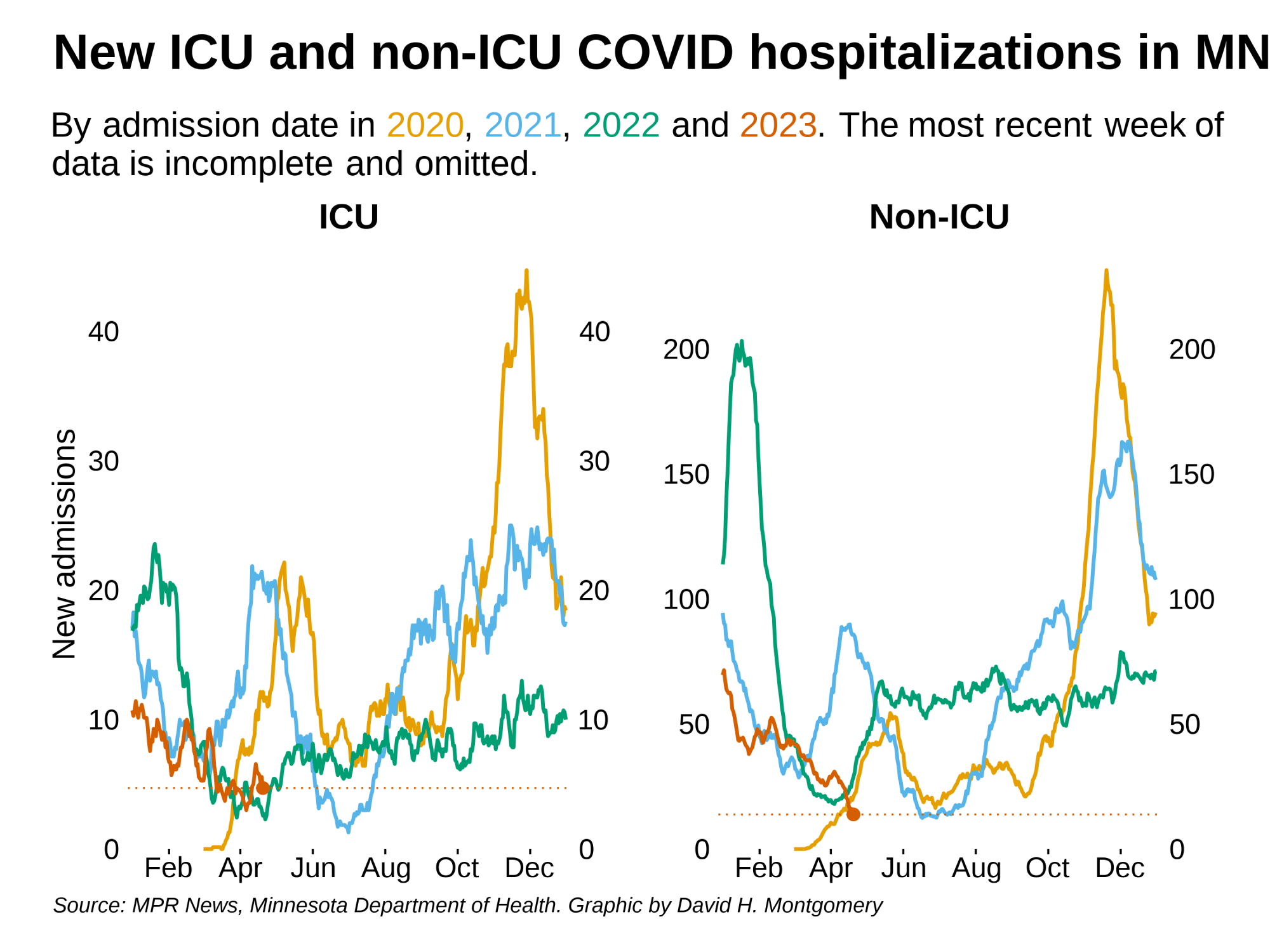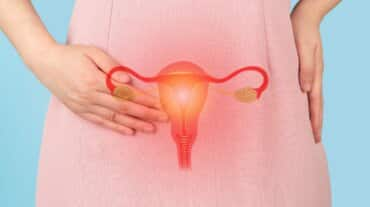The approaching May 11 ending of the Federal Government’s official COVID-19 Public Health Emergency is accompanied by several good signs about the virus, including decreasing case counts, hospitalizations and mortality, as well as decreased detection of the virus in wastewater monitoring efforts.
This week, an article in the Centers for Disease Control and Prevention’s “Morbidity and Mortality Weekly Report” revealed that the monovalent mRNA COVID vaccine remained 56 percent effective in adults against invasive mechanical ventilation (IMV) and death one to two years after the last dose.
The report looked at patients with between two and four monovalent mRNA COVID vaccine doses during the Omnicron wave, Feb. 1, 2022 through Jan. 31.
Overall, the monovalent vaccine was 62 percent effective among adults 18 years and older and effectiveness bumped up to 69 percent among adults 65 years and older. Additionally, vaccine effectiveness was highest, at 76 percent, among those who had their last dose within six months, but the vaccine remained 56 percent effective in people even one to two years after their last dose.
Despite the continued evidence of the importance of COVID-19 vaccination, our recent “Inoculation Nation” update found fewer Americans were vaccinated in March than ever since the shots became available, even though fewer than one in five of those eligible for the bivalent booster have received the shot.
Public media is independent, community-supported media for the public good.
In other less-than-sunny recent COVID news, yet another new strain has surfaced.
As reported by our colleagues at LAist, XBB.1.16, also called “Arcturus” proliferated in India, and its presence has grown to account for about 10 percent of U.S. cases. (And slightly more in the CDC’s region five, which includes Minnesota.)
While this weekly round-up focuses on the latest COVID-19 data, there are many other health issues that deserve attention. This week we end with a look at some concerning trends and disparities related to syphilis from the MDH’s just-released annual report on sexually transmitted disease.
But first, on to this week’s COVID data.
Three things to know:
Officially reported COVID-19 cases and hospitalizations trend down for the ninth week.
Four-week and one-week declines in COVID wastewater levels reported for all regions of the state according to latest data.
The CDC rates all Minnesota counties with low COVID community levels, and only three counties have a case rate that meets the threshold for high transmission.
Officially reported COVID-19 cases and hospitalizations trend down for ninth week, number of deaths also down
The MDH’s latest weekly COVID-19 data release shows COVID-19 conditions in the state continue to improve Officially reported cases have now declined for nine weeks straight.
Hospital admissions, a more robust measure due to the lack of reporting for cases confirmed through at-home testing, have trended downward over the same period, except for a tiny uptick in late March.
Notably, weekly COVID hospital admissions, 130 for the week ending April 20, have not been this low since July 2021. The much smaller proportion of intensive care unit (ICU) hospitalizations, numbering 33 in the most recent week, have not dropped as precipitously as those to non-ICU beds in the last couple of weeks — but are also near the lowest levels seen throughout the pandemic.
Overall COVID-19 hospitalizations are down to levels not seen since summer 2021.
David H. Montgomery
COVID-19 mortality is also trending in the right direction, with the number of deaths decreasing for five weeks as of the week ending April 6 (mortality data takes longer to confirm, so lags both case counts and hospitalizations). Still, 29 Minnesotans lost their lives at least in part due to COVID-19 during the most recent week.
APM Research Lab’s monthly “Color of Coronavirus” update, published last week, found that national COVID-19 deaths were down by 40 percent in February, the last month of complete data, compared to January, and that “Deaths in all racial and ethnic groups went down at a similar rate.”
COVID levels in Twin Cities wastewater at lowest point since last spring, and levels throughout the state are on a downward trend
Twin Cities metro update
The total level of virus in Twin Cities wastewater decreased by six percent for the week ending April 24 compared to the previous week, according to the latest data from the Metropolitan Council and the University of Minnesota’s Genomic Center.
While this is a relatively modest one-week decline, the virus level has declined 77 percent from where it was nine weeks ago. Currently, the level of virus now entering the Metro Plant is at its lowest since late March 2022.
Statewide update
COVID levels dropped in all seven Minnesota regions over the most recent four-week and one-week periods, according to the latest data out of the University of Minnesota’s Wastewater SARS-CoV2 Surveillance Study.
Over the four weeks ending on April 16, COVID wastewater levels dropped by more than 50 percent for all the study’s regions except the Twin Cities Metro, which was just shy of that threshold at a decline of 47 percent. The largest four-week decline was 83 percent in the North East region.
In our last update two weeks ago, we noted that the South Central region was the only region to have a substantial increase, 205 percent, in COVID levels in the wastewater. At the time, the graph showed that the region was likely on the downward slope of that bump.
The most-recent data shows that COVID levels in wastewater declined by 75 percent in that region over the last four weeks and 42 percent over the last week, which was the highest one-week change for this update.
For the third week in a row, the CDC’s COVID-19 Community Level assessment for Minnesota has placed all 87 of the state’s counties at a low COVID community level. The CDC said three counties exceed the threshold for high transmission.
Polk, Pennington and Grant counties are the only counties in Minnesota that meet the high transmission threshold of at least 100 cases per 100,000 this week, although all three are below 200 per 100,000.
So why don’t those counties receive a higher community level assessment? According to the CDC’s criteria, if the COVID case rate is below 200 per 100,000 people and the COVID hospitalization rate is below 10 per 100,000 people, which it is for all three counties, then it warrants a low community level rating.
Grant County comes closest to a higher rating with a COVID hospitalization rate of 9.3 per 100,000 people.
Still, people who are more vulnerable to COVID infection, or are in regular contact with those who are, may want to take precautions int those counties such as masking while indoors and social distancing.
Only seven counties are in the “substantial” transmission range (50 to 99 cases per 100,000) this week. This number is down from 18 at the beginning of the month.
Other health data this week: Syphilis is on the rise in Minnesota
On Wednesday our colleague Michelle Wiley reported on the MDH’s annual summary of sexually transmitted disease (STD) statistics. The state recorded 1,832 cases of syphilis in 2022, “an increase of 375 compared to 2021.”
This contrasts with declines in the number of other STDs, including HIV, chlamydia and gonorrhea.
Since syphilis can linger in the body for decades, the health department is particularly concerned about primary and secondary syphilis since those would more likely be newly identified cases. Primary and secondary cases accounted for about one-third of all known cases in 2022; 676 in total, up from 564 in 2021, 416 in 2020 and 385 in 2019.
In 2022 the statewide rate of primary and secondary syphilis was 12.7 per 100,000. This rate varies significantly, however, by population, with notably higher rates among men than women; Minneapolis as opposed to other parts of the state; those in their 30s as opposed to other age groups; and American Indian and Black Minnesotans as opposed to other racial and ethnic groups.
According to the CDC, the only way to avoid syphilis is to abstain from sexual contact, or to limit sexual engagement to “long-term mutually monogamous relationship with a partner who does not have syphilis.”
In addition, the CDC states that “condoms, when used correctly every time someone has sex can reduce the risk of getting or giving syphilis.”
For additional information see the COVID in Minnesota Key data page; new data is added throughout the week.
Discovered on: 2023-04-28 20:04:00
Source: Good signs about COVID as Public Health Emergency ends on May 11



